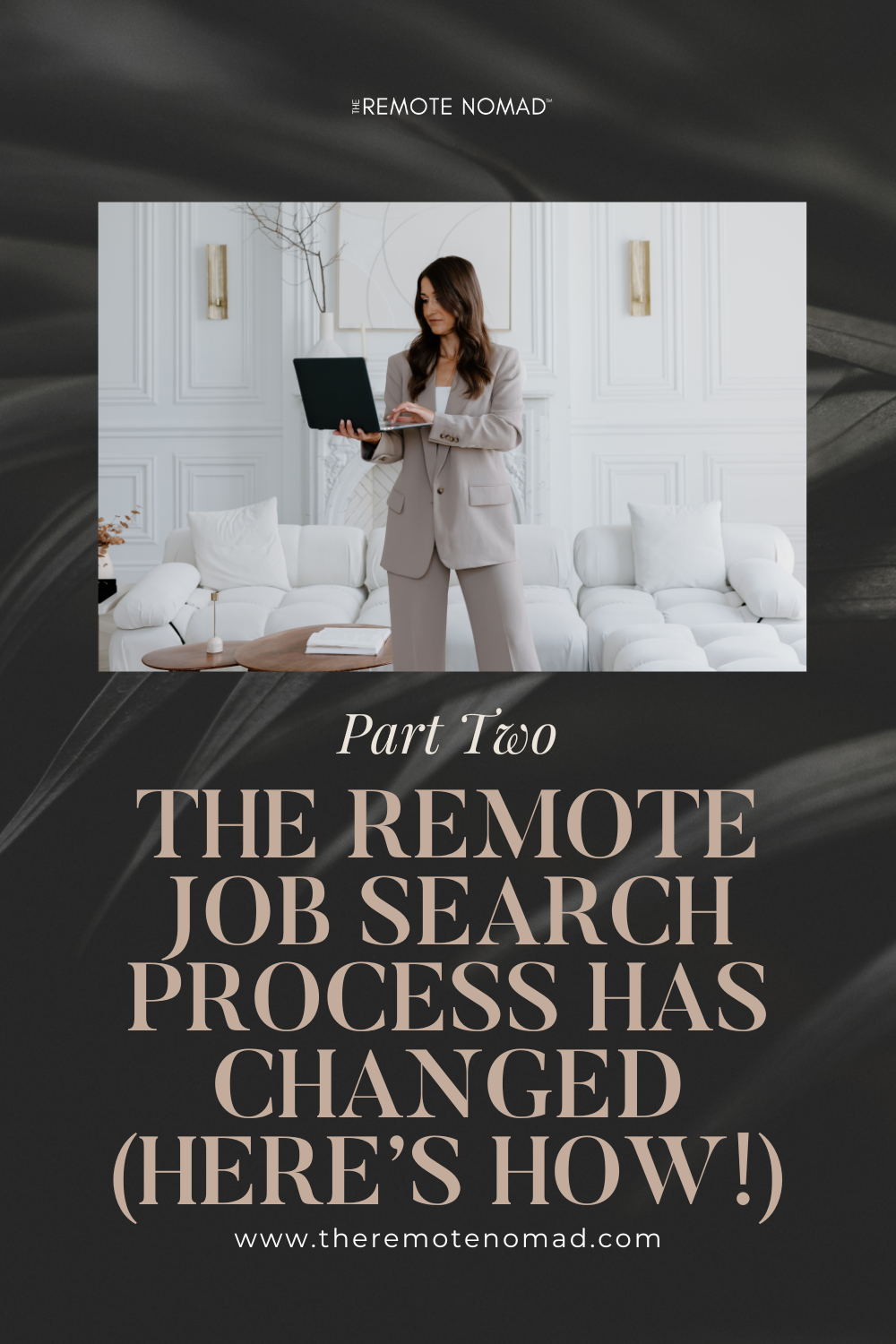Part 2: The Remote Job Search Process Has Changed (Here’s How!)
As the remote job search market evolves, the strategies that worked even just a few years ago are no longer enough. In part 1, I shared five major shifts I’m seeing as a remote career coach, such as the need for tailored applications, the increasing role of networking, and the growing importance of personal branding. Today, we’re going deeper into the next five trends shaking up how we find and land remote jobs.
Before we get started, though, be sure to download the FREE Remote Career Playbook. It walks you through the 6 essential steps to land a remote job.
6. What “Remote” Really Means in 2025 Job Listings
In the early days of remote work, you either worked in an office or remotely. But now, there’s a lot more gray area. So, what does “remote” really mean these days? You might come across job listings like:
Remote, where you truly are remote from anywhere
Remote, but only hiring US citizens
Remote, hiring internationally
Remote, but you have to be based in your home country
Hybrid, where you’re only expected in the office a few days a month
The endless variations can make it confusing to figure out what’s truly remote. One key takeaway that I want you to understand is that many jobs labeled as "remote" have conditions that don’t fit a fully remote lifestyle, especially if you're a digital nomad or want to live in a different time zone.
Pro tip: Take time to review job postings to determine the level of flexibility carefully. Look for phrases like “remote-first” or “remote worldwide” for the most freedom. And oftentimes, “asynchronous” could also be a hint that a remote role offers more flexibility. And don’t be afraid to ask for clarification before applying—better to know upfront than after investing hours into the process.
7. How to Avoid Remote Job Scams in 2025
It’s sad to say, but with the rising popularity of remote work, scammers are taking advantage. They post fake job listings on legitimate platforms like Indeed, luring unsuspecting candidates into schemes that steal money or personal information.
Red Flags to Watch For in Remote Job Listings
A common scam? Fake job offers that ask for upfront payments for equipment or software or “companies” contacting you via text or asking you to communicate on WhatsApp or Telegram. These scams are designed to exploit the demand for remote jobs and the eagerness of job seekers.
Pro tip: Always verify job postings directly through the company’s official website. If you find a remote job on a third-party site, head over to the company’s official careers page and apply from there. Trusted platforms like FlexJobs are also great for weeding out potential scams since they vet every listing.
Want more tips on how to avoid remote job scams? Check out 10 Ways to Avoid Remote Job Scams.
8. The Rise of “Ghost Jobs”
One of the most frustrating trends in today’s job market is the increase in “ghost jobs”—positions that are posted by companies with no intention of actually hiring. Some companies leave job postings open indefinitely, even if they aren’t actively hiring.
Why do companies post ghost jobs?
They want to appear attractive to new talent.
It keeps current employees motivated.
Gives the impression that the company is growing.
In some cases, companies are legally required to post a job publicly before making an internal hire.
HOW TO SPOT A GHOST JOB POSTING?
While there’s no foolproof way to avoid ghost jobs, unfortunately, using job sites (like FlexJobs) and networking to learn about roles before they’re publicly posted can save you time. Also, watch for vague job descriptions or listings that seem to remain open indefinitely.
9. AI is Everywhere
Artificial Intelligence (AI) is having a massive impact on the remote job search process in two main ways:
Job seekers using AI for applications: Tools like ChatGPT are being used to draft resumes and cover letters, but so far, the quality isn’t where it needs to be. AI-generated content often lacks the personalized touch that can make an application stand out. While it might feel like a time-saving trick, in reality, it can make your application appear generic and uninspired.
If you’re rewriting your resume, check out Top 3 Ways to Make Your Resume Stand out for Remote Jobs or grab the FREE Resume Revamp Checklist to create a top-tier resume for remote jobs.AI in the hiring process: From Applicant Tracking Systems (ATS) to AI-driven interview tools, AI also shapes how candidates are evaluated. Many companies use AI to filter through resumes and applications, which means it’s critical to tailor your application with the right keywords. With that said though, the human touch is still important. AI might screen the application, but real people make the final hiring decisions.
While AI can’t replace the human touch (yet), you can expect it to be a tool that enhances your work rather than replaces it. Instead of relying on AI for applications, focus on crafting thoughtful and targeted content yourself. This balance will ensure your application feels authentic. Inside The Remote Career Accelerator and my 1:1 Remote Career Coaching, I have specific frameworks you can use to create high-quality, custom applications in less time.
10. Why You Need to Apply to Remote Jobs Faster Than Ever
If you’re waiting too long to apply for that dream job, you might miss the window. Job postings today are taken down faster than ever, sometimes in as little as 3 days. There’s a significant influx of candidates applying, so companies often close listings as soon as they’ve received enough applications. In some cases, companies may post jobs for internal hires but take the listings down once they've met legal requirements for public posting.
Pro tip: Speed is of the essence. Prepare your core materials in advance, such as an optimized LinkedIn feed and resume so that you’re ready to submit quickly. Networking can also help you gauge whether a job posting is legitimate or if it’s destined for an internal hire.
11. BONUS: Salary Transparency is Improving for remote job seekers
Let’s wrap up with a bit of good news. Employers are becoming more transparent about salaries. Driven by new legislation in many regions, more remote companies are posting salary ranges in their job listings. While there’s still room for improvement—some remote salary ranges are so broad they’re not particularly helpful—it’s a step in the right direction for job seekers. Transparent salary information helps you decide whether a remote job aligns with your expectations before applying, saving you time and frustration.
Navigating the Changing Remote Job Search Market
The remote job search market is continually evolving, and while that presents some challenges, I believe that it also opens up new opportunities for job seekers. Anyone hoping to land a remote job should stay informed and adjust their approach as they go, and hey—you’re in the right place for that here.
Want the full breakdown of the 6-step system I use with coaching clients to help them land remote jobs? Watch the FREE 90-minute Remote Job Masterclass now.




